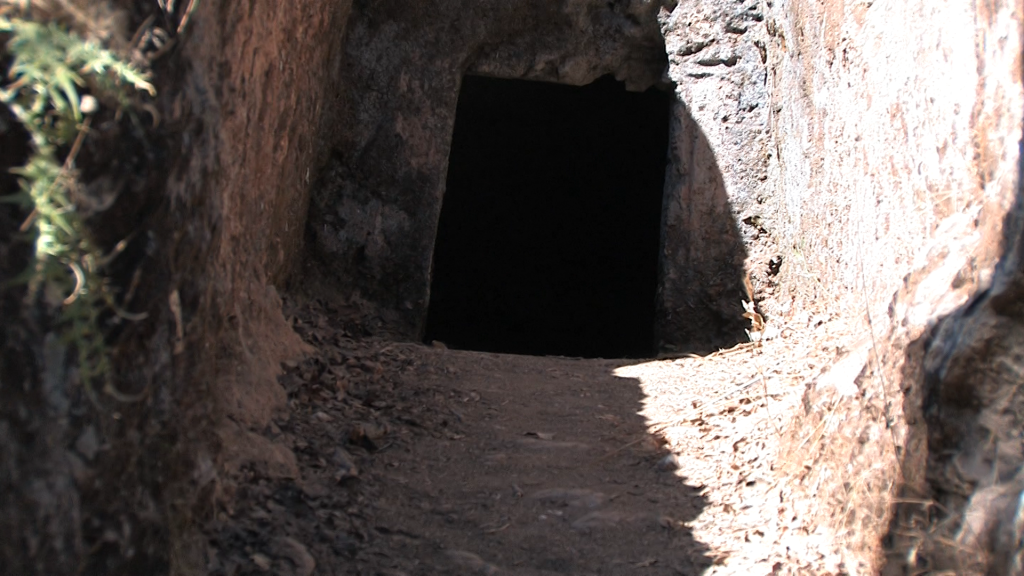The Minoan Cemetery of Armeni, a hidden treasure on the island of Crete, Greece, whispers tales of the past and offers a glimpse into the mysteries of a civilization that thrived thousands of years ago. Nestled among the rolling hills and fragrant landscapes, this ancient burial site stands as a testament to the rich history and cultural heritage of the Minoan people. The Minoan Cemetery of Armeni holds within its tombs a story of life, death, and the enduring connection between humanity and the land.

The name “Armeni” resonates with a sense of reverence and antiquity, a name that evokes images of time-worn stones and the rustling of leaves in the breeze. Situated near the village of Armenoi, the cemetery is a place where the past and present coalesce, where the whispers of history can still be heard among the cypress trees and wildflowers.
The Minoan Cemetery of Armeni boasts a unique collection of rock-cut tombs, a testament to the Minoans’ intricate burial practices and their reverence for the afterlife. The tombs, carved into the natural rock formations, bear witness to the craftsmanship and artistry of the people who created them. These tombs are more than mere resting places; they are gateways to a world where the Minoans’ beliefs, rituals, and cultural expressions come to life.
As visitors step into the cemetery, they are transported to a realm of the past, where each tomb tells a silent story. The entrances to the tombs are adorned with symbols, carvings, and motifs that reflect the Minoans’ worldview—a world where nature, mythology, and spirituality intertwined. The sun, the moon, and sacred animals are depicted, offering insights into the cosmic significance that shaped the Minoan belief system.
Exploring the tombs, visitors encounter a labyrinth of chambers and corridors, a reflection of the Minoans’ reverence for the journey between life and death. The architecture and layout of the tombs vary, reflecting the diversity of the people they honored. Some tombs contain niches where offerings and personal belongings were placed, emphasizing the connection between the living and the departed.
The Minoan Cemetery of Armeni holds within its tombs not only the physical remains of the past but also a sense of spiritual continuity. The art and artifacts found within the tombs provide a window into the daily lives and aspirations of the Minoan people. Intricately crafted pottery, jewelry, and figurines offer insights into the aesthetics and craftsmanship that defined their culture.
One of the most striking features of the cemetery is the way in which it integrates with the natural landscape. The tombs are nestled amidst olive groves, vineyards, and wildflowers, creating a sense of harmony between the human and the natural worlds. The hills, the sky, and the scent of the earth all contribute to an atmosphere that is both tranquil and contemplative.
The Minoan Cemetery of Armeni is not just a place of historical significance; it is also a place of reverence and reflection. As visitors walk among the tombs, a sense of connection to the past and an appreciation for the passage of time emerge. The presence of the tombs, the stories they tell, and the people they memorialize become a bridge that spans across centuries, reminding us of our shared humanity and the continuity of life’s journey.
The cemetery’s role in the understanding of Minoan culture and history is invaluable. It sheds light on the Minoans’ complex belief systems, their artistic expressions, and their relationship with the land they inhabited. The cemetery is a tangible link to a civilization that left a profound impact on the development of Greek and Mediterranean cultures.
Today, the Minoan Cemetery of Armeni stands as a heritage site, a place where the threads of the past are interwoven with the fabric of the present. Its significance extends beyond its historical value—it is a place that invites contemplation, a place where visitors can stand on the threshold between the known and the unknown, between life and the afterlife. In the quiet moments spent among the tombs, the voices of the Minoan people, their stories and aspirations, resonate with a timeless resonance, reminding us of the intricate tapestry of human existence and the legacy we leave behind.